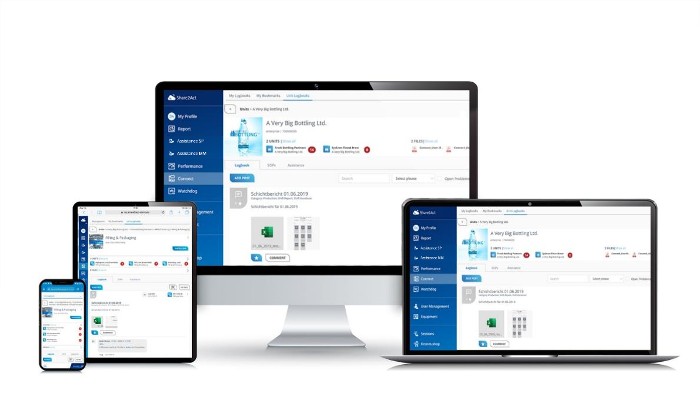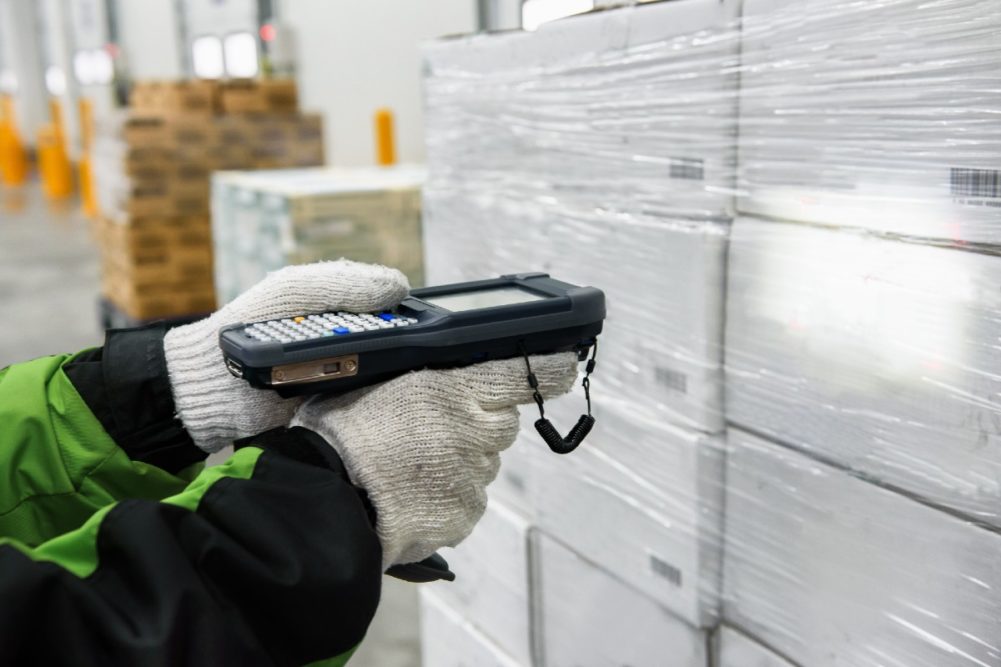Dairy processors interact with a tremendous amount of data on any given day, and they are tasked with using that data to increase efficiency, transparency and sustainability throughout the supply chain. This data doesn’t reach its full potential when stored in Excel files, so processors are turning to digital solutions that allow them to adjust operations based on what the data reveals.
According to the 2023 Digital Trends in Supply Chain Survey from PricewaterhouseCoopers, 86% of executives surveyed agree their company should invest more in technology to identify, track and measure supply chain risk.
“Plants produce more data electronically than a human can read, process and understand,” said Ryan Mertes, chief solutions officer for Ever.Ag, Frisco, Texas. “These systems can be set up to say, ‘Here are the things I need to know, and this is when something is going wrong.’”
Improving operations and traceability
Mertes said he envisions a connected supply chain traceable from the soil to the final product on retail shelves, and both consumers and regulatory entities are beginning to demand this level of transparency. In fact, Mertes said such an offering with end-to-end traceability is on the horizon for Ever.Ag within the next year.
Currently, the first step in creating a digitized supply chain is getting rid of Excel spreadsheets in favor of systems that can provide a report in a moment’s notice, which is critical in the event of a traceability issue. This not only boosts transparency, but Mertes said it is also good for business.
“Digitization allows you to also improve your operations because if you know liquids went from here to there and how much specifically got used, you can achieve best practices,” Mertes said.
That information can help processors reduce waste and prevent costly downtime, thus creating huge savings for companies. It can also reduce the amount of a product that might have to be recalled in a food safety event by being able to precisely pinpoint when the issue occurred and what products were affected.
“By having records digitized I can typically reduce my risk window of when batches stop and start so if I do have a traceability event, I don’t have to recall a whole day’s worth of production,” Mertes said.
Digitized systems also allow companies to document how much product was made and if it was produced with responsible energy and water consumption practices, all valuable data for companies to share as they seek to demonstrate their commitment to sustainability.
“(Ever.Ag) lays the groundwork for traceability first, and then improved operations and being able to prove out your sustainability goals,” Mertes said.
As a logistical solution connecting dairy cooperatives with haulers and processors, Milk Moovement is a cloud-based system that allows all parties to see what’s happening in the network on a minute-by-minute basis, co-founder and CEO Robert Forsythe said. These groups used to only come together periodically to reconcile data, but the system allows everyone to see the value of milk load by load, access testing data, determine the exact location of trucks and provide answers for any discrepancies in data.
Forsythe said the pandemic revealed the dairy supply chain was rather static and had trouble adjusting quickly to changes, and Milk Moovement’s goal is to help processors build a more dynamic supply chain.
“People realized very quickly that the supply chain, the way it is built, is very regional and it is built for cycles,” Forsythe said. “It’s not able to adapt to changing consumer demand that quickly. We believe bringing more processors, plants and cooperatives together onto one system creates more of a network and allows groups to change operations very quickly because they see something happening.”
The company is even taking traceability down to the feed level as it has developed a partnership with Cargill to allow it to access component testing in Milk Moovement with the goal of improving feed and providing products that can help yield milk with specific benefits, whether that be increased protein or butterfat.
Having data stored in a cloud-based system also offers security benefits as recent ransomware attacks on food service and processing companies have all targeted on-premises databases and not cloud databases, Forsythe said.
Optimization and speed
Having data detailing the status of the current milk supply is essential to helping processors know what they can produce, and OptaHaul’s software allows processors to know exactly how much supply is in the network each day, said Colm Kelly, commercial director. The solution also allows the network to respond quickly if a plant needs to increase production or reroute milk if a processor must temporarily shut down operations.
“If you stabilize the raw materials coming in and stabilize the network that is supplying the raw materials, you have a more solid and robust production as a result of that,” Kelly said.
Taking miles out of the network not only provides processors with significant savings in transportation costs, but it also reduces emissions and ensures a more reliable supply of milk to processors.
OptaHaul’s software also suggests the most cost-effective routes to enable better choices and make more informed decisions. While artificial intelligence and machine learning play a large role in this, there will always be a level of manual intervention needed in all decision making, Kelly said. Still, he said making manual changes with backing of insight from machine learning is highly beneficial.
Change management is key to success in the adoption of such digitized systems, and strong sponsorship from senior leaders can help ensure this is successful, said Eric Linxwiler, senior vice-president with TradeBeyond, a provider of supply chain solutions. Speed to market is another top consideration.
“Creating and mastering product specifications in a single central system helps to speed time to market when introducing new products,” Linxwiler said. “Partners can also log in and collaborate, reducing handoffs, manual errors and process inconsistencies across different teams. Having one consistent, optimized process ensures that these benefits are shared across all teams and that every process improvement benefits the entire organization.”
 Photo: Krones Group
Photo: Krones Group
Digitization within plants
Process and Data Automation, an Erie, Pa.-based wholly owned subsidiary of Krones Group, offers on-premises line management software solutions that receive orders from enterprise resource planning systems and pass those orders down the line, and it also can interface with warehouse management systems. Additionally, Eric Williams, digitalization group manager, said the company offers products commonly used with aseptic solutions that read real-time production information from the line. These analytics solutions enable producers to evaluate key production and quality indicators to improve overall equipment effectiveness.
Krones’ Share2Act solutions are a cloud-based collaborate platform built for the purpose of connecting the people, machines and systems involved in the production process. As a result, Share2Act allows procedures to be streamlined so downtime can be reduced. The platform creates a digital image of shop-floor operations, and each production unit receives its own timeline and a chronological listing of events. Workers can then interact from anywhere to address issues they experience in the plant and receive feedback from others on how to resolve those issues.
“That level of visibility and interaction between groups is very helpful in being able to improve and prevent downtimes that may be common across multiple platforms,” Williams said.
Share2Act also allows a corporate maintenance engineer for a processor to monitor multiple operations simultaneously.
Overall, Williams said the coupling of artificial intelligence to production is going to change the way production equipment is run and maintained as well as how issues are predicted. He said the industry is getting to the point where it can predict downtime and notify customers when there has been a downtime along with the reason and solution to the problem.
“That’s really what we are pushing towards to help run more efficiently, to reduce the amount of unexpected downtime and provide better throughput for them,” Williams said.
Connecting to the future
Moving forward, better hardware on hauling trucks and IoT technology will be essential to moving the supply chain forward, Forsythe said. To this end, he said one of Milk Moovement’s clients recently invested in a large fleet of trucks with sensors that monitor the temperature of the milk throughout its journey through the supply chain, and that client would soon like to test the quality of the milk on trucks, as well.
Additionally, trucks are often making decisions on which assembly line to bring milk to without knowing the components of that milk. With value-added products on the market including high-protein, low-lactose options, it’s becoming increasingly important to deliver the right milk to the right assembly line, Forsythe said.
“We are finding getting data into a producer’s hands or even a plant’s hands is one thing, but then helping them get that data in their network’s hands is even more important because then everyone can really focus on the data and make better decisions,” Forsythe said.
Kelly said artificial intelligence is also going to be critical in forecasting milk production because such forecasts have traditionally been based on guesses from the previous week’s production and the weather. More accurate forecasts will enable processors to predict precise production capabilities.
Better tracking of energy consumption, carbon reduction, water usage and emissions in the production and distribution of products should be an area of focus for all brands, and digital solutions help track that information, Linxwiler said.

